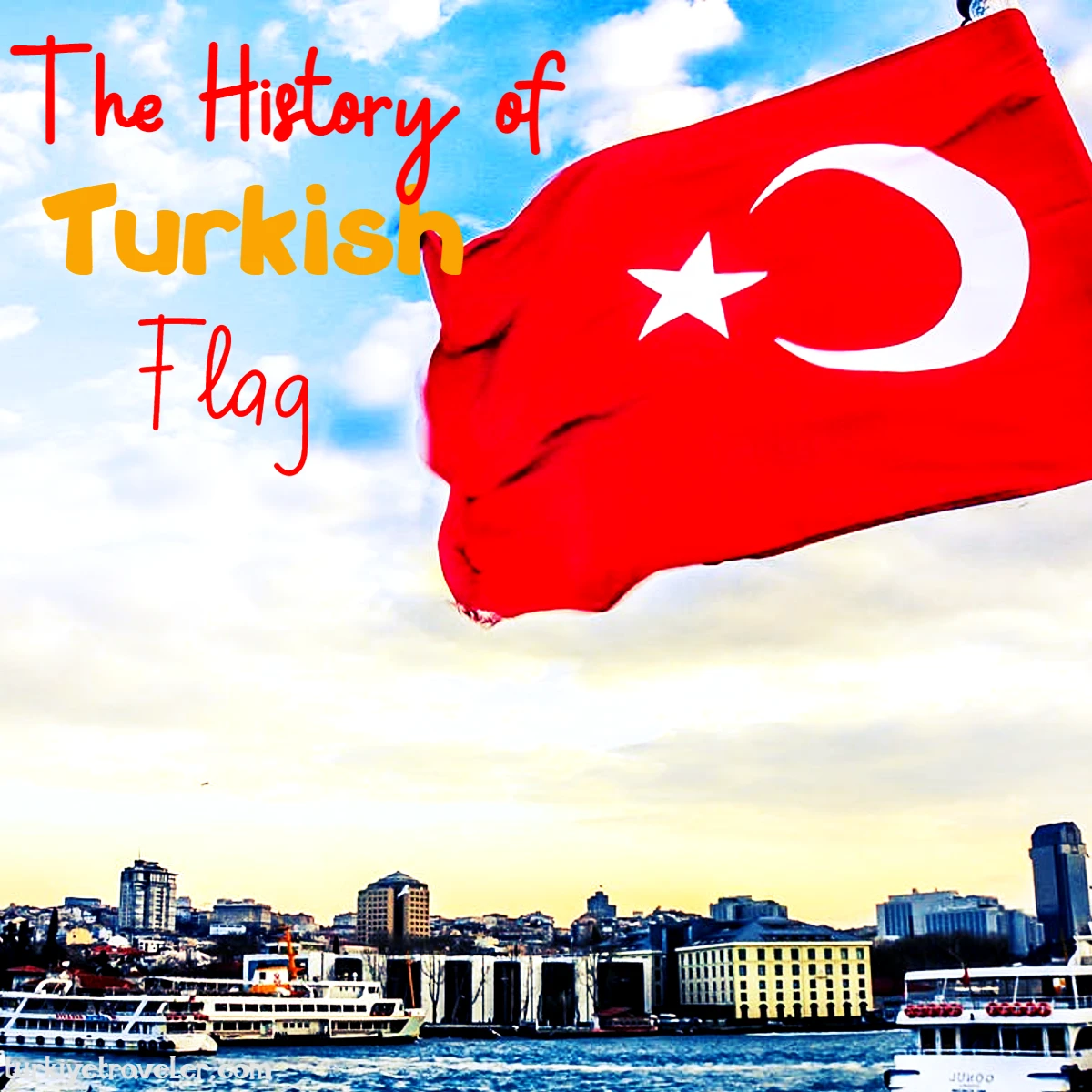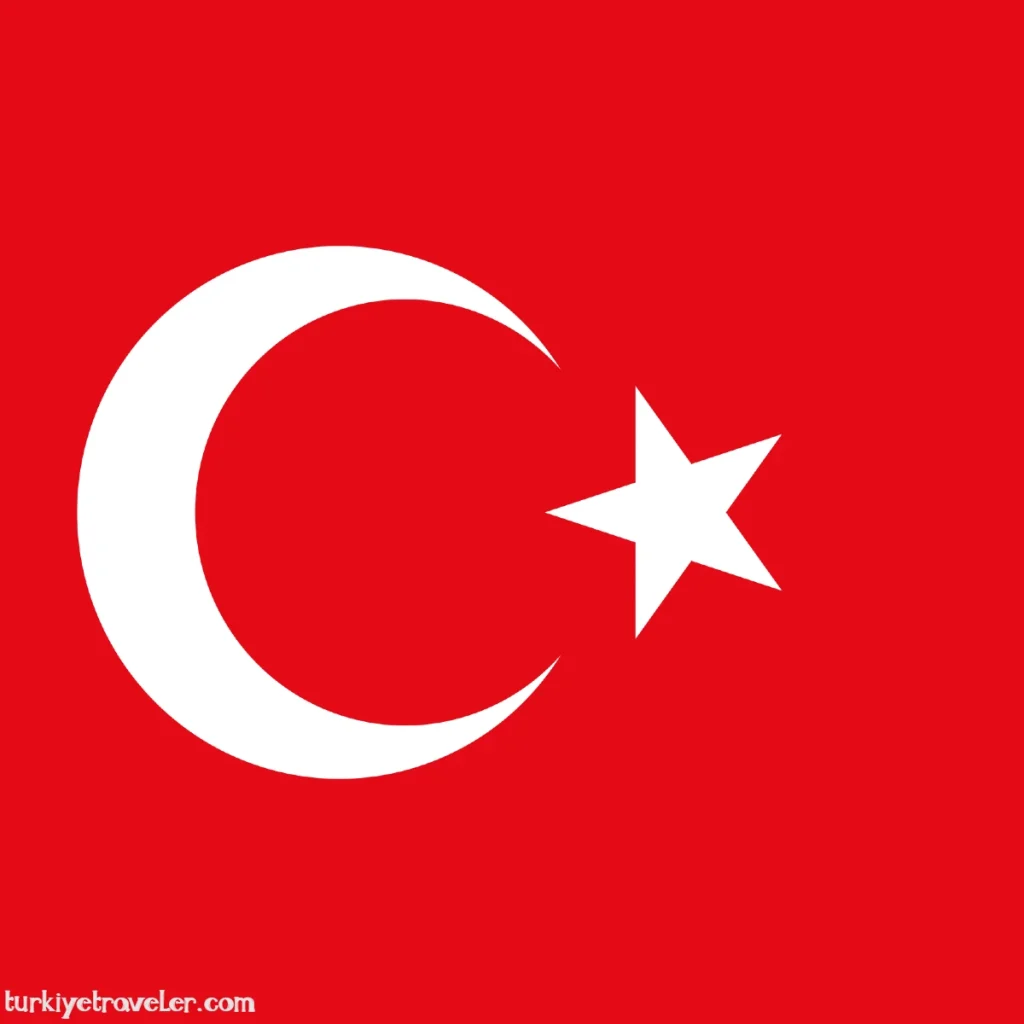
Have you ever wondered about the story behind the flag you see fluttering in the wind? The Turkish flag, officially known as the Türk bayrağı, is a national symbol that carries a wealth of history, culture, and significance. It’s not just a piece of cloth, but a testament to the resilience and courage of the Turkish people.
The Turkish flag is instantly recognizable with its vibrant red field and a white star and crescent. The flag’s red background, which is as deep and intense as the hearts of the people it represents, is a significant color in Turkish history. Its origins can be traced back to the Ottoman Empire, and it has been maintained throughout various changes in the nation’s history.
The star and crescent, situated to the left of the flag, are white. The star has five points, and the crescent opens towards the right side of the flag. This design is not only aesthetically appealing but also holds deep symbolic meaning, which we will delve into further down the line.
The Historical Roots of the Flag
The story of the Turkish flag is a tale as old as time. It has its roots firmly grounded in the historical depths of the Ottoman Empire. The star and crescent symbol was initially used in the Ottoman flag, where the star was often seen alongside the crescent moon on different emblems.
However, the Turkish flag, as we know it today, was adopted after the establishment of the Republic of Turkey. This occurred on the 29th of October 1923, led by the nation’s founding father, Mustafa Kemal Atatürk. The flag’s design was formally standardized in the Turkish Flag Law on the 29th of May 1936.
The Symbolic Significance of the Flag Elements
Now, let’s delve into the symbolic meanings behind the Turkish flag’s design. The flag is a powerful emblem that encapsulates Turkish pride, national identity, and collective memory. Its distinct elements each carry their own unique symbolism and contribute to the overall interpretation of the flag.

The Red Field
The color red has been a significant aspect of Turkish history and culture for centuries. It is often associated with bravery, valor, and the blood of the martyrs who have sacrificed their lives for the nation. Thus, the flag’s red background is a constant reminder of the courage and resilience that define the Turkish people.
The White Star and Crescent
The star and crescent, gleaming white against the red background, are significant symbols in Turkish culture. The crescent moon is a symbol of Islam, reflecting the country’s dominant religion. The five-pointed star represents the five pillars of Islam, which are the five basic acts in Islam, considered mandatory by believers and are the foundation of a Muslim’s life.
In the next sections, we’ll explore how the flag is used in different contexts and how it has been incorporated into various aspects of Turkish life and culture.
The Turkish Flag in Various Contexts
The Turkish flag is a constant presence in the lives of the Turkish people. It is flown proudly at public buildings, schools, and homes, and is especially prominent during national holidays and celebrations.
National Celebrations
National holidays such as Republic Day (Cumhuriyet Bayramı) and Victory Day (Zafer Bayramı) see the flag displayed in all its glory. The flag becomes a symbol of unity, national pride, and collective celebration during these times.
Sports Events
In sports events, the flag is a symbol of national pride and unity. Turkish sports fans are known for their passionate support, and the flag often features prominently in these gatherings.
The Turkish Flag in Art and Culture
The Turkish flag is not only a national emblem but also a source of inspiration in art and culture. It is incorporated into a variety of artistic expressions, from music and cinema to literature and visual arts.
Music and Cinema
In music and cinema, the Turkish flag often features prominently. It is used to symbolize the spirit of the nation, and its presence often evokes strong patriotic sentiments. It also features in national anthems and patriotic songs that express love and respect for the nation.
Literature and Visual Arts
In literature, the flag is often used metaphorically to symbolize various aspects of the nation. Visual arts, including painting and photography, also often feature the flag. Artists use it to create powerful images that express their interpretations of national identity, history, and culture.
The Evolution of the Turkish Flag
The Turkish flag has not always been the design we recognize today. Over the centuries, it has undergone changes that reflect the nation’s history and evolution. Let’s trace the flag’s journey from its origins to its current form.
The Ottoman Era
The origins of the Turkish flag can be traced back to the Ottoman Empire, which reigned from the 14th to the early 20th century. The emblem of a star and crescent was widely used in various forms on Ottoman flags, though the design was not standardized. The exact number of points on the star or the size and orientation of the crescent could vary.
The Flag of the Late Ottoman Empire
In the late Ottoman Empire, a flag design that closely resembles the modern Turkish flag came into use. This flag had a red background with a white star and crescent. However, the star was positioned with one point directly upward, unlike the current design where the star’s uppermost point is slightly offset to the right.
The Formation of the Republic and the Standardization of the Flag
With the formation of the Republic of Turkey in 1923, the flag was standardized. The modern design, with a slightly off-center star, was formally adopted and has remained unchanged since then.
The Legal Protections for the Turkish Flag
As a national symbol, the Turkish flag is protected by law. It’s not just an emblem, but a valued treasure that is guarded with stringent rules.
The Turkish Flag Law
In 1936, the Turkish Flag Law was passed, which provided a detailed description of the flag’s design and the regulations for its use. This law outlines the proper handling of the flag, its display rules, and the penalties for any misuse or disrespect towards it.
The Flag in Daily Life
In daily life, the Turkish flag is treated with great respect. It is flown on all public buildings, and its proper handling is taught from an early age. Any desecration of the flag is considered a serious offense and is dealt with strictly under the law.
The Flag as a Symbol of Unity
In a world full of diversity and differences, the Turkish flag stands as a symbol of unity. It brings together people of different ethnicities, religions, and backgrounds under one emblem, signifying their shared identity as Turkish citizens.
The Role of the Flag in Public Gatherings
The flag plays a central role in public gatherings and national celebrations. It is used as a symbol to rally people together, whether it’s for a national holiday, a political rally, or a sporting event.
The Flag and National Identity
More than just a symbol, the Turkish flag is an integral part of national identity. It represents not just the country and its government, but the people, their history, their culture, and their shared experiences. The flag serves as a reminder of their collective identity and the values they hold dear.
Conclusion: The Living Symbol of a Nation
The Turkish flag is more than a simple piece of cloth. It is a living symbol that tells the tale of a nation, its history, and its people. It is a symbol of unity, pride, and resilience. Each time it flutters in the wind, it tells a tale of the bravery of martyrs, the unity of a nation, and the rich cultural heritage that defines Turkey.
Every aspect of the flag, from its vibrant red field to the star and crescent, carries deep symbolic meaning. It is deeply ingrained in the hearts of the Turkish people and is a constant presence in various aspects of life and culture. Whether it’s in national celebrations, sports events, or artistic expressions, the Turkish flag stands as a powerful emblem of a proud nation.
So, the next time you see the Turkish flag, remember the rich tapestry of history and culture it represents. It’s not just a flag; it’s a testament to the spirit of a nation and its people. It is the Türk bayrağı – the flag of Turkey.
Remember, flags are more than just pieces of fabric. They are an embodiment of a nation’s identity, history, and aspirations. The Turkish flag, with its deep red field and white star and crescent, is a perfect example of this. It carries within its folds the story of a resilient nation and its proud people.
I hope this article has given you a deep appreciation for the Turkish flag and the rich history and symbolism it carries. As you see this flag flying high, remember the stories it holds and the pride it instills in the hearts of the Turkish people.
FAQs
The Turkish flag, known as the Türk bayrağı, has a simple yet striking design. It consists of a red background with a white star and crescent located at the center-left. The star has five points, and the crescent opens towards the right side of the flag.
The red color of the Turkish flag represents the valor and bravery of the Turkish people. It is often associated with the blood of martyrs who have fought for the nation.
The white star and crescent are significant symbols in Turkish culture. The crescent is a symbol of Islam, reflecting the dominant religion of the country. The five-pointed star represents the five pillars of Islam, which are the fundamental tenets of the religion.
The Turkish flag, as we know it today, was adopted after the establishment of the Republic of Turkey on October 29, 1923. Its design was standardized in the Turkish Flag Law on May 29, 1936.
The exact origin of the Turkish flag’s design is not known. The star and crescent symbol has been used since the time of the Ottoman Empire. However, the flag’s design was standardized after the establishment of the Republic of Turkey.
Yes, it is illegal to disrespect the Turkish flag. The Turkish Flag Law, passed in 1936, outlines the regulations for the flag’s use and the penalties for misuse or disrespect. Any desecration of the flag is considered a serious offense under this law.
he Turkish flag is used in a variety of contexts. It is flown on public buildings, schools, and homes, and is prominently displayed during national holidays and celebrations. It also features in sports events, music, cinema, and various forms of art and culture.
The Turkish flag has a specific proportion defined by law. The width is 1.5 times the height, making the flag’s aspect ratio 3:2. The star and crescent’s placement and size are also defined relative to the flag’s dimensions.
Read More:
Contents




